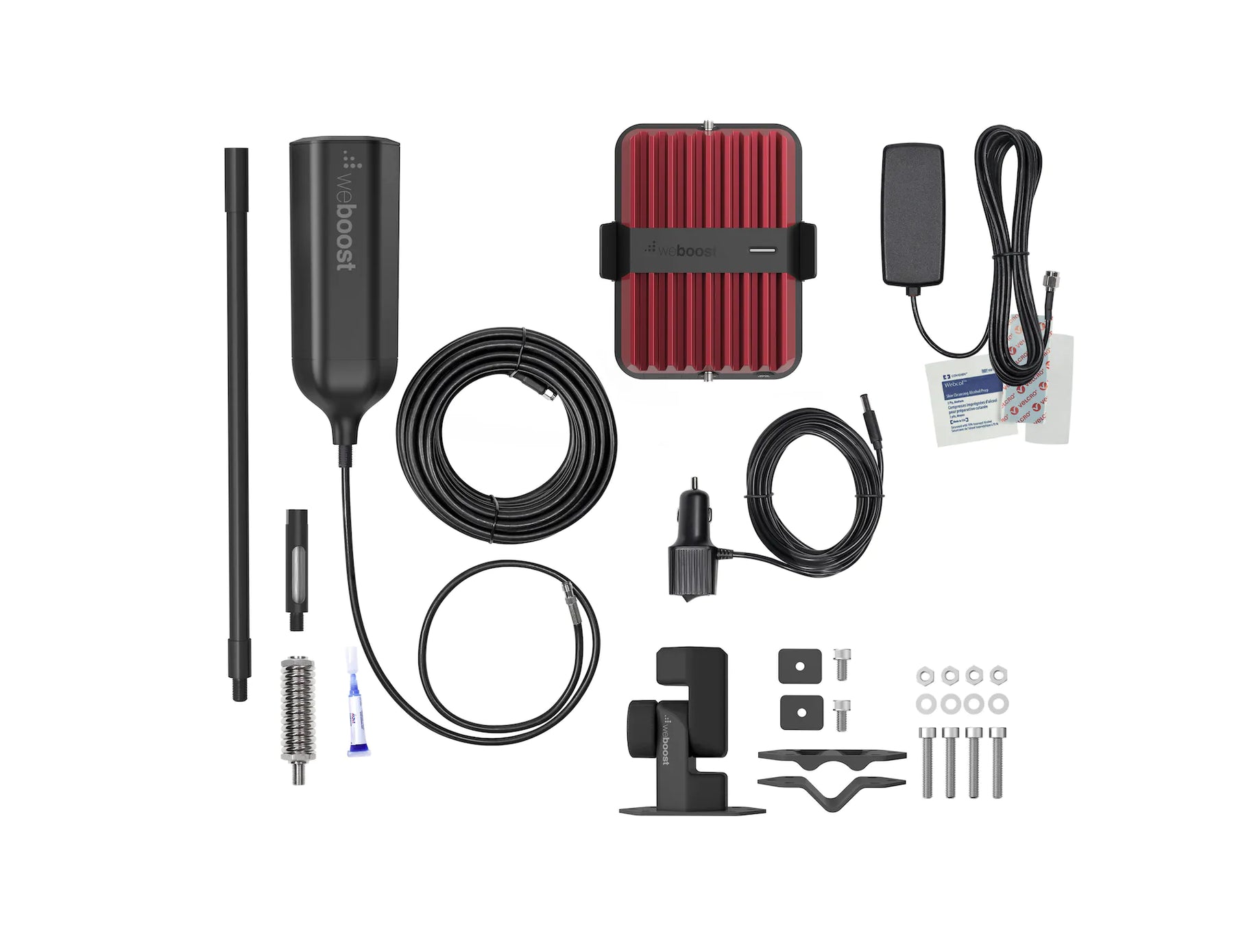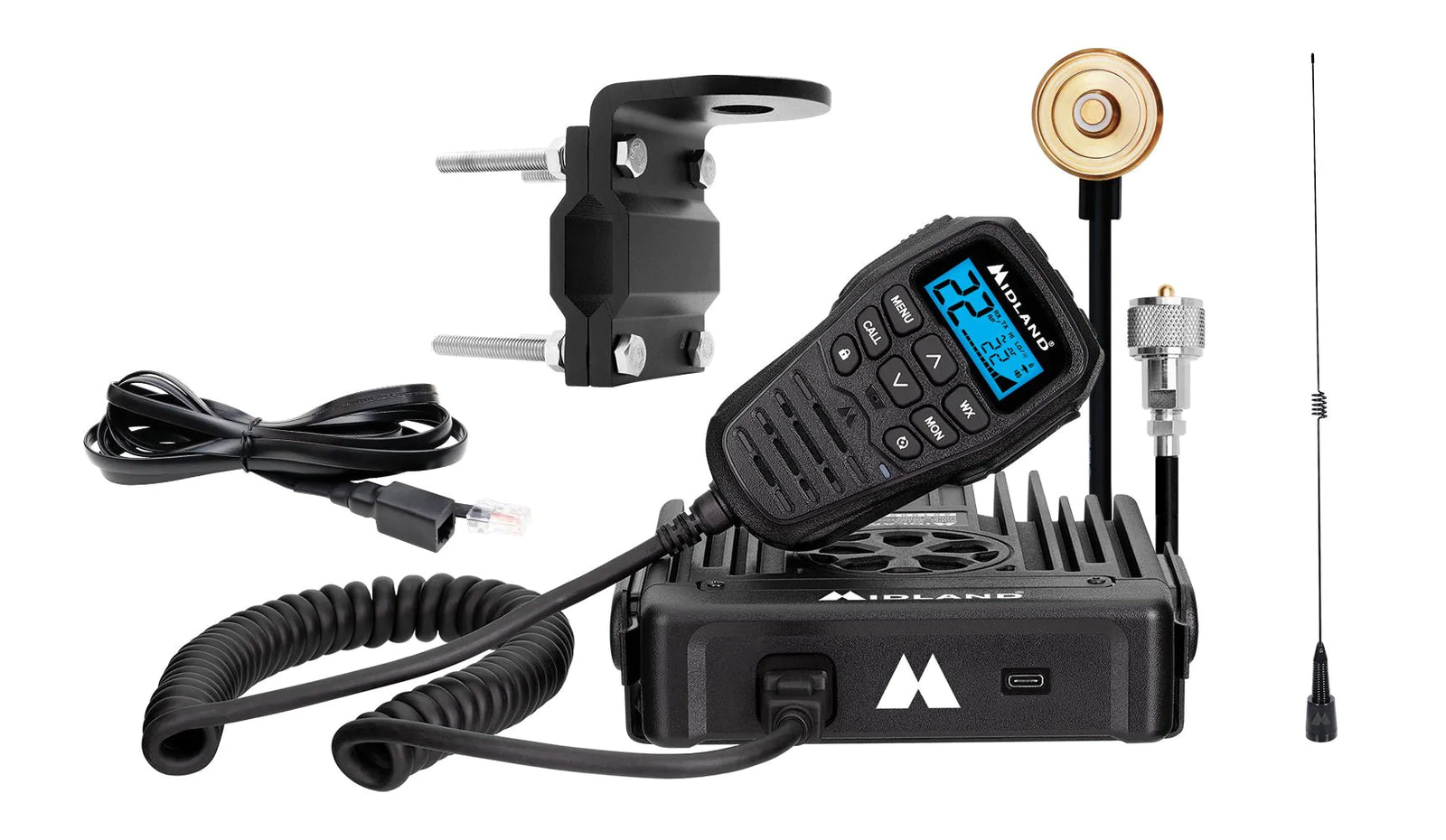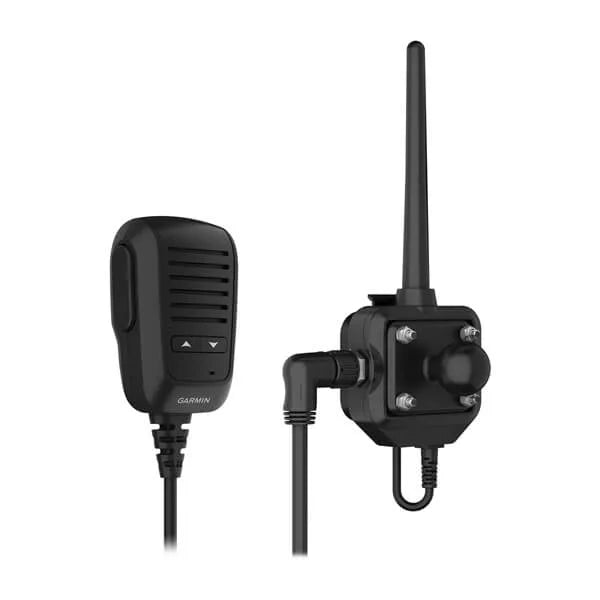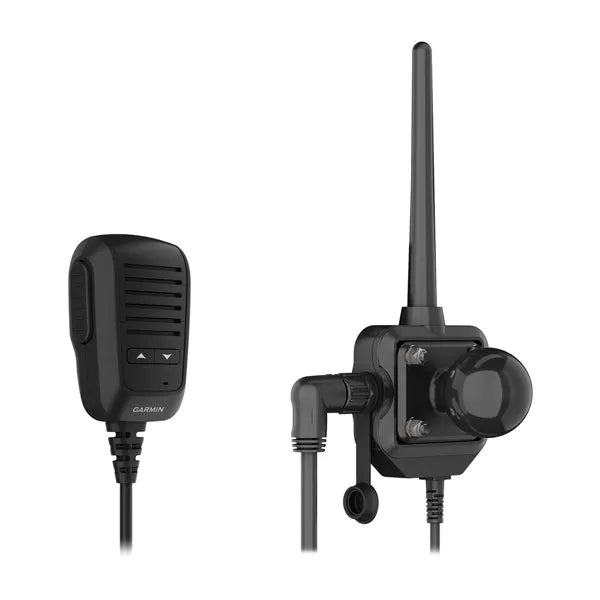Full-Size Friday Blog: Week 13
Essential Overlanding Communication Gear for Remote Adventures
If you’re venturing into the wild, reliable overlanding communication systems are non-negotiable. This guide eliminates the guesswork in choosing the right gear, spotlighting the pros and cons of the most popular radios and options such as GMRS, Ham, and CB radios, alongside the life-saving potential of satellite devices.
At GODZ MFG, we advocate for robust communication systems, often incorporating multiple devices like cell phones, radios, satellite phones, and satellite communication devices such as inReach. However, selecting the ideal communication setup can be daunting. Let's explore the options to help you prioritize your communication needs.
Key Takeaways
- The selection of overlanding communication equipment should be based on factors like range, terrain, and group size, with popular options being GMRS, ham, and CB radios, each offering different capabilities and requiring various levels of licensing.
- To enhance communication, overlanders should consider additional gear like antenna mounts, signal boosters, and dual SIM cards for improved range, signal strength, and coverage, especially in remote or international trips.
- In emergency situations where traditional communication methods are unavailable, satellite communication devices such as satellite phones, personal locator beacons, and satellite messengers are critical, providing global coverage and SOS features.
Choosing the Right Communication Device for Overlanding
Pictured above)
Selecting a communication device for overlanding involves more than just grabbing the first radio that catches your eye. It requires careful consideration of factors such as range, terrain, and group size. Not all devices are created equal, and what works beautifully in one situation might prove ineffective in another. Think about the geographical challenges you might face. Will you be crossing vast deserts, or navigating dense forests? Consider also the size of your group. Are you a lone wolf, or part of a larger pack? The answers to these questions will guide your choice.
Four types of radios are particularly prevalent in overlanding:
- GMRS radios: These radios offer better reception and longer range than portable walkie talkies. They can broadcast over GMRS channels and receive NOAA weather updates, which is invaluable in unpredictable weather.
- Ham radios: Ham radios provide the clearest voice communication over great distances.
- CB radios: CB radios are a reliable and easy-to-install option, but they have a shorter range.
Understanding these differences is key to making an informed choice about your communication system.
GMRS Radios
General Mobile Radio Service (GMRS) radios are an excellent choice when it comes to striking a balance between range and user-friendliness. With their extended range, higher-powered signal, and clearer signal quality, they offer a low-cost, highly portable option for overlanding communication. This makes them particularly versatile for off-road pursuits, where conditions can vary wildly from one moment to the next. In comparison to Family Radio Service, a GMRS radio provides a more reliable communication solution for those who require extended range and better signal quality.
But it’s not just about the here and now. GMRS radios are also looking to the future, with features like short data messaging applications, including text messaging and GPS location information. And don’t worry about getting tangled up in red tape - getting a GMRS license is fairly easy now. There’s no technical background or exam needed, just a small fee and a form to fill out.
In fact, if you’re over 18 and not a representative of a foreign government, you’re eligible for a GMRS license. And the best part? The license covers all immediate family members, so you can keep everyone connected.
Ham Radios
Should your journey take you far from the mainstream routes, you might need a device with more power. This is where ham radios become an attractive option. These powerful devices, also known as ham radio systems, enable short and long-range communications with a massive network of amateur radio repeaters, making them crucial for both emergency services and regular communication during overlanding. With clear voice communication over great distances and substantial battery life, they offer unmatched reliability in remote areas.
Of course, with great power comes great responsibility. To transmit on ham radios, you’ll need a license to operate them. There are three levels of certification available: Tech, General, and Amateur Extra, but don’t let that intimidate you. A General Technician License, which allows for increased communication coverage up to around two miles, is both accessible and inexpensive. So, with a little bit of study and a small fee, you can unlock the full potential of ham radios and ensure you’re always connected, no matter where you roam.
CB Radios
If short-range communication is what you need, then the reliable CB radio is your go-to device. A premier choice in the United States, CB radios offer 40 channels and features like NOAA weather scans and alerts. Their reliability, ease of installation, and affordability make them a popular choice among overlanders.
The range of CB radios can vary from 2 to 15 miles for mobile radios and 3-15 miles for handheld units. While they aren’t reliant on line-of-sight, their range can be affected by physical obstructions like a dense tree cover or foliage. So although they might not be the best option for long-distance communication, for getting in touch with fellow overlanders nearby, they are a reliable and affordable choice.
Enhancing Your Communication Capabilities
Selecting your communication device is merely the beginning of the process. To make the most out of your overlanding communication, you’ll also need to consider how you can enhance your setup. This could involve upgrading your antenna mounts, using signal boosters, or utilizing dual SIM cards. Each of these enhancements can significantly improve your communication capabilities, ensuring you can connect with others, no matter where your overlanding journey takes you.
Antenna mounts can significantly improve the range and quality of communication, with various mounting options available for different vehicle setups. Signal boosters can enhance cell signals in remote areas, improving calling, texting, navigation, and data streaming capabilities. And dual SIM cards allow for better network coverage and reduced roaming fees, especially useful for international overland trips. Let’s examine these enhancements in greater detail.
Antenna Mounts
Just as a sail captures the wind that propels a ship, an antenna snatches the signal that drives your communication. Naturally, the larger the antenna, the better the range. Mounting a larger antenna on your vehicle can improve reception and provide better communication capabilities than portable walkie-talkies. Moreover, the type of antenna mount can affect the antenna’s performance. For instance, a magnetic mount offers the convenience of easy removal and installation, while a permanent mount provides stability and durability.
There are also versatile mounting options to accommodate different overlanding vehicle setups. These include T-slot, pole, and fixed mounting. Some mounts even feature an articulating design that allows the mount to be folded down when not in use, making them convenient for daily driving and avoiding obstacles like low garage entrances or car washes. Of course, it’s crucial to choose a quality antenna mount that can withstand the harsh environments and rough terrain of overlanding.
Signal Boosters
We’ve all experienced this - attempting to make a call or send a text, only to find that your cell phone' signal is feeble or entirely absent. This can be especially frustrating (and potentially dangerous) during overlanding trips, which often take you into remote areas where cell signals are weakest. That’s where signal boosters come in. These devices enhance available cell signals, improving:
- calling
- texting
- navigation
- data streaming capabilities in remote areas.
So how do signal boosters work? They capture weak cell signals with an outside antenna, amplify them, and then rebroadcast the stronger signal inside the vehicle. This means that even in areas where cell signals are weak, you can still stay connected. And the best part? Signal boosters are designed to support multiple devices simultaneously, ensuring that all passengers in the vehicle can benefit from enhanced connectivity.
 (WeBoost Drive Reach Overland) Pictured above
(WeBoost Drive Reach Overland) Pictured above
Dual SIM Cards
As our world becomes more interconnected, dual SIM phones pave the way to a new era for overlanders. These devices allow travelers to:
- Use two different SIM cards for better network coverage and to avoid roaming fees, making them especially useful for international overland trips.
- Maintain contact with local and international networks simultaneously without incurring high costs.
- Maintain separate personal and professional communication lines on a single device, enhancing your privacy.
Dual SIM phones are also highly flexible. They can function with just one SIM card if needed, retaining full functionality similar to a single-SIM phone. And thanks to the existence of eSIM technology, you can digitally install a carrier’s services without the need for a physical SIM card. This makes dual SIM phones a practical and convenient choice for overlanders, providing improved connectivity and flexibility on the go.
Satellite Communication Devices for Emergencies
While radios and signal boosters are excellent for daily communication, emergency communication through satellite communication devices, including emergency communication devices, proves to be an actual lifeline in dire situations. In remote areas where cell coverage is nonexistent, these devices serve as the ultimate link to civilization. They’re essential for signaling for help, with satellite phones, personal locator beacons, and satellite messengers being the most common types of emergency communications used.
Satellite phones provide near-global coverage and can communicate worldwide, making them invaluable in emergencies. Personal locator beacons (PLBs) connect to the SARSAT satellite network, emitting a distress signal with GPS location data for efficient Search and Rescue response. And satellite messengers offer global coverage, SOS alerts, GPS navigation, and regular communication via satellite networks. Let’s look at each of these devices in more detail.
Satellite Phones
In an emergency, a satellite phone can be your best friend. These devices, such as those offered by Iridium, provide near-global coverage and can communicate worldwide. This makes them extremely valuable for overlanders in remote locations, especially during natural disasters when local and cellular service towers may be down.
However, as with any technology, satellite phones do have their limitations. Despite their extensive coverage, they come with high costs and may encounter issues in areas with dense vegetation or certain weather conditions that can affect calls and transmissions. However, the peace of mind they offer in emergencies makes them a worthy investment for any serious overlander.
Personal Locator Beacons
Personal locator beacons (PLBs) are another essential tool for overlanders. When activated, these devices send a distress signal and provide coordinates via the NOAA network to the nearest search and rescue organization. This makes them an invaluable asset in emergencies, helping to ensure that help can find you quickly and efficiently.
PLBs operate using the dedicated International Cospas-Sarsat Programme’s satellite network to ensure accurate distress alert and location data. Moreover, once activated, PLBs have batteries designed to continuously transmit the distress signal for periods often exceeding 24 hours. However, to make the most out of higher power of your PLB, it’s crucial to register it with national authorities. This provided personal information is crucial for search and rescue personnel during an emergency.
Satellite Messengers
For a more versatile option, consider satellite messengers like the Garmin inReach. These devices offer:
- Global coverage
- The ability to send SOS signals
- GPS navigation
- Regular communication capabilities
Making them an essential tool for overlanders traveling in remote areas. In addition to their exceptional range of safety features, satellite messengers also provide a multifunctional tool for any overland expedition.
However, while satellite messengers are increasingly popular for their messaging and SOS capabilities, potential buyers should research various devices’ subscription requirements for these services before deciding to switch service providers. The last thing you want in the middle of nowhere is to discover that your satellite messenger isn’t functioning as expected because you overlooked the fine print.
Staying Connected with Handheld Radios
Despite the array of advanced communication devices available, the most simple solutions can often be the most effective. This is where handheld radios prove their worth. These devices, such as FRS walkie talkies and rugged radios, provide short-range communication options that are easy to use and highly portable, making them perfect for overlanding.
FRS radios, for instance, are low-cost, easy-to-use, and do not require a license for operation. They’re primarily used in overlanding for staying in touch around camp, communicating trail issues, and for short-distance emergency notifications. On the other hand, rugged radios offer high power output and durability, making them a reliable choice for overlanding communication. Let’s take a closer look at these two types of handheld radios.
FRS Walkie Talkies
For short-range communication within a few miles, FRS walkie talkies are a fantastic option. They’re simple to use and low-cost, making them an accessible choice for everyone. Whether you’re communicating between vehicles or individuals overlanding within a few miles, an FRS walkie talkie can keep everyone connected.
However, while FRS walkie talkies are a great tool for short-range communication, their range is limited. They’re typically a limited range to about 1/4 mile to 1/2 mile in neighborhoods or areas with many obstructions and can reach up to a mile or two in open, unobstructed terrain. So while they might not be the best option for long-distance communication, for getting in touch with fellow overlanders nearby, they’re a reliable and affordable choice.
Rugged Radios
If you’re looking for something a bit more robust, consider rugged radios. Some models, like the 45-watt GMRS models, offer high power output, which provides superior range and the ability to transmit over longer distances. This makes them a great choice for keeping in touch with your group during your overlanding adventures.
In addition to their high power output, rugged radios also offer durability. Waterproof models like the Rugged G1 Adventure Series are built to withstand harsh environments, ensuring communication is maintained even in challenging weather conditions. With their high power output and durability, rugged radios are an ideal choice for overlanding communication.
Summary
Overlanding is as much about the journey as it is about the destination. And to ensure a safe and enjoyable journey, communication is key. From GMRS radios to satellite phones, there’s a communication device to suit every overlanding adventure. But remember, it’s not just about having the right gear. Enhancing your communication capabilities, learning from the overlanding community, and staying connected with handheld radios can all make your overlanding experience that much more rewarding.
Frequently Asked Questions
What is the best radio for overlanding?
Consider opting for a CB or GMRS radio for overlanding, as they have similar communications are often recommended for this purpose.
Can a GMRS radio talk to a CB radio?
No, GMRS radios cannot communicate with CB radios because they operate at different frequencies (462/467 MHz for GMRS and 27 MHz for CB). This makes them unable to talk to each other.
What is the best way to communicate while off roading?
The best way to communicate while off-roading is to use citizens band radios or CB's, two popular radios which are cost-effective and provide good range for cross-vehicle talk and basic communication needs.
How do signal boosters enhance cell signals in remote areas?
Signal boosters enhance the cell phones' signals in remote areas by capturing weak signals with an outside antenna, amplifying them, and rebroadcasting the stronger signal inside the vehicle, which improves calling, texting, navigation, and data streaming capabilities.
What are the benefits of using dual SIM phones for overlanding?
Using a dual SIM phone for overlanding allows you to benefit from better network coverage, avoid roaming fees, and maintain contact with both local and international networks without incurring high costs.







1 comment
Ben Head
Hello, would you like grow Website Traffic, Sales & Conversions? Don’t know what to do? Start Your Free Trial | Pay Later | No Contract
I am a Digital Marketing Expert and I do SEO (Search Engine Optimization) grow website traffic, Website Rankings (Google, Yahoo, and Bing) & Organic results. I am a Software Engineer with more than 12 years experience in Digital Marketing.
We improve these results:
• Website Traffic
• Website Rankings ( Google, Yahoo & Bing)
• Organic results
• SERPs
• Increase Conversion rate
Client’s Results – https://rivalinfotech.com/new-projects
Start Free Trial: https://rivalinfotech.com/rival-seo-package
Thank you
Leave a comment
This site is protected by hCaptcha and the hCaptcha Privacy Policy and Terms of Service apply.